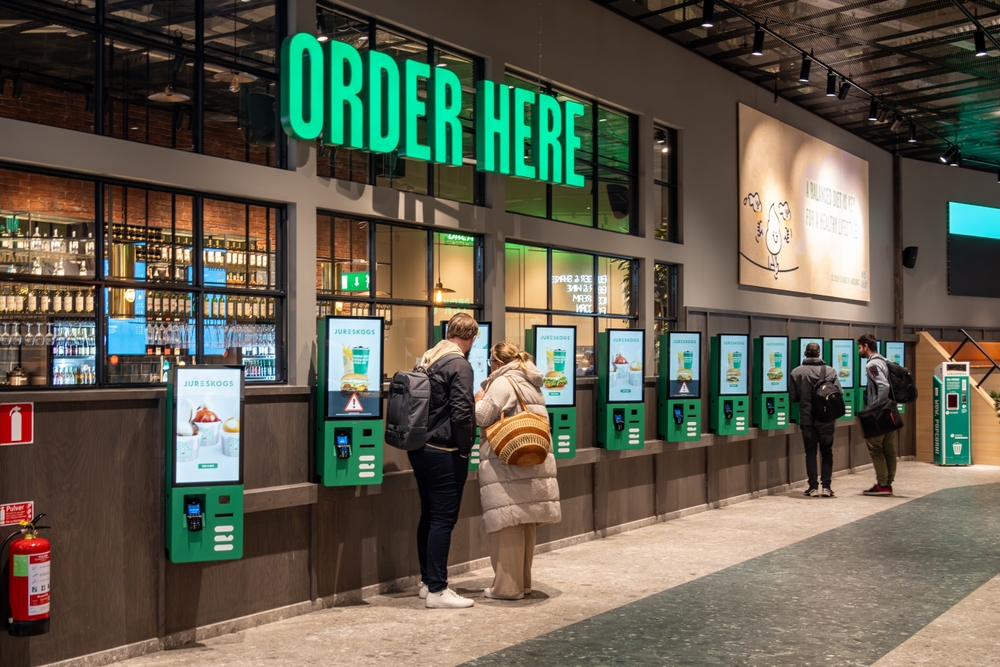There’s little doubt that self-service technology has been a game-changer across retail, hospitality and beyond. From supermarkets to fast food restaurants, hotel receptions to ticketing halls, kiosks are widely praised for their ability to cut queues, reduce wait times, and generally give people greater freedom to do things in their own way, in their own time.
But self-service has its critics, too. One of the most common complaints is about kiosks being used to replace jobs.
Sadly, this has become something of a media scare story. The idea that more kiosks lead to fewer people in work is not backed up by evidence and distorts the real picture around kiosk adoption.
If anything, the rise in kiosk uptake has been spurred on in part by the retail and hospitality industries experiencing severe shortages in workers. In hospitality, for example, unfilled vacancies are 48% higher than they were before the COVID-19 pandemic. In that context, adopting self-service technology is more about filling labour gaps than laying off workers.
Finding the balance
There is a balance for businesses to strike, however. While consumer feedback about self-service technology is often good, people are much less enthusiastic about declining staff levels in shops, restaurants, hotels etc. According to one survey from the US, 40% of retail customers said shopping in store had become “less enjoyable” since the pandemic. And 60% said that was because there were less staff available.
Businesses cannot magic workers out of thin air in a challenging recruitment market, of course. The difficulty they face is that, because so many customer-facing businesses had to close over the course of the pandemic, a lot of workers left retail and hospitality. They’ve since found employment elsewhere. And a lot of retail and hospitality businesses just don’t have the margins to tempt them back with higher wages.
It’s certainly true that running self-service kiosks is cheaper than employing staff. But they are by no means a direct replacement. In fact, the most useful way to look at self-service technology is as a means to aid and augment the work your people do, a means of streamlining service and giving customers an additional choice. You still need to maintain staffing at a certain level to provide the standards of service people expect.
This is a lesson that supermarkets appear to have learnt the hard way. Self-checkouts were one of the earliest examples of mass self-service adoption. But in recent years, big supermarket chains have been accused of using them to cut staffing costs at the expense of the customer experience.
After plenty of backlash about fewer staffed checkouts causing longer waits rather than cutting queues, the likes of Asda and Morrisons have reversed self-checkout roll-outs and started to add more staffed checkout lanes again. Morrisons even publicly admitted that it had gone “too far” and that its self-checkout policy had caused frustration for customers.
None of this is to say that self-service technology doesn’t have an important role to play in the future of retail and hospitality. Its strengths as a way to streamline POS and provide additional options to customers both for completing transactions and for finding information themselves remain undiminished. But there is a need for balance.
If you’re interested in learning more about self-service kiosks in your business, contact our team to find out how we can help.
